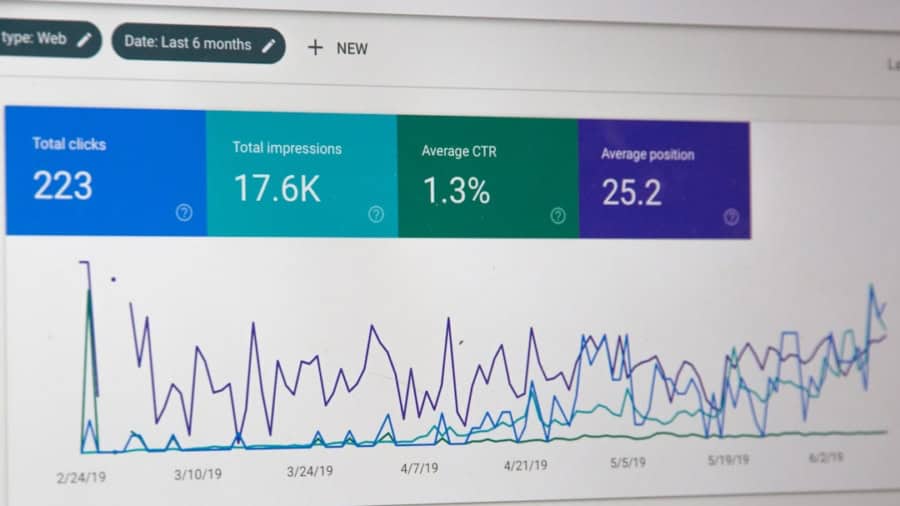Learning analytics is an emerging field that harnesses the power of data to enhance educational outcomes. It involves the collection, analysis, and interpretation of data related to learners and their contexts, with the aim of improving learning processes and environments. The advent of digital technologies in education has led to an explosion of data generated by students, educators, and educational institutions.
This data can provide valuable insights into how students learn, what strategies are effective, and where improvements can be made. By employing learning analytics, educators can make informed decisions that lead to more personalized and effective learning experiences. The significance of learning analytics extends beyond mere data collection; it encompasses a systematic approach to understanding the complexities of learning.
By analyzing various data points—such as student demographics, engagement metrics, assessment scores, and interaction patterns—educators can gain a comprehensive view of the learning landscape. This holistic perspective allows for the identification of trends and patterns that may not be immediately apparent. As a result, learning analytics serves as a critical tool for educators seeking to enhance curriculum design, instructional strategies, and overall student success.
Key Takeaways
- Learning analytics involves the collection, analysis, and interpretation of data from educational settings to improve learning and teaching.
- Learning analytics can help optimize curriculum by identifying areas for improvement and tailoring content to meet the needs of students.
- By using learning analytics, educators can track student progress and performance to provide targeted support and intervention when needed.
- Learning analytics can be leveraged to understand student engagement and identify factors that contribute to student success or challenges.
- Utilizing learning analytics can help identify knowledge gaps and learning patterns, allowing educators to adjust curriculum and teaching methods accordingly.
The Role of Learning Analytics in Curriculum Optimization
Informing Curriculum Development with Actionable Insights
Learning analytics plays a pivotal role in this process by providing actionable insights that inform curriculum development. By analyzing data related to student performance and engagement, educators can identify which aspects of the curriculum are effective and which require modification.
Data-Driven Curriculum Refining
For instance, if data reveals that students consistently struggle with a particular topic or skill, educators can re-evaluate the instructional methods used to teach that content and make necessary adjustments.
By examining trends in student performance across different demographics, educators can tailor their curriculum to address specific challenges faced by diverse learner groups.
Fostering an Inclusive Learning Environment
For example, if analytics indicate that students from a particular background are underperforming in mathematics, targeted interventions can be designed to support those learners. This data-driven approach not only enhances the relevance of the curriculum but also fosters an inclusive learning environment where all students have the opportunity to succeed.
Using Learning Analytics to Identify Student Progress and Performance
One of the most significant advantages of learning analytics is its ability to provide real-time insights into student progress and performance. Traditional assessment methods often rely on periodic evaluations, which may not accurately reflect a student’s ongoing learning journey. In contrast, learning analytics allows for continuous monitoring of student performance through various metrics such as assignment submissions, quiz scores, and participation in discussions.
This ongoing assessment enables educators to identify trends in student performance over time and intervene when necessary. For example, consider a scenario where an educator uses a learning management system (LMS) equipped with analytics capabilities. By tracking student engagement with course materials and assessing their performance on formative assessments, the educator can quickly identify students who are falling behind.
This timely information allows for targeted interventions, such as personalized feedback or additional resources tailored to individual needs. Furthermore, by analyzing aggregate data across the class, educators can identify common areas of struggle and adjust their teaching strategies accordingly.
Leveraging Learning Analytics to Understand Student Engagement
Understanding student engagement is crucial for fostering a productive learning environment. Learning analytics provides valuable insights into how students interact with course materials and participate in learning activities. By analyzing data related to time spent on tasks, frequency of interactions with peers and instructors, and participation in discussions, educators can gauge levels of engagement and identify factors that contribute to or hinder student involvement.
For instance, if analytics reveal that students are spending minimal time on course readings or assignments, it may indicate a lack of interest or difficulty with the material. Educators can then investigate further by soliciting feedback from students or adjusting the content delivery methods to enhance engagement. Additionally, learning analytics can help identify patterns in engagement across different segments of the student population.
For example, if certain groups exhibit lower engagement levels, targeted strategies can be implemented to increase their involvement, such as incorporating more interactive elements or collaborative projects.
Utilizing Learning Analytics to Identify Knowledge Gaps and Learning Patterns
Learning analytics serves as a powerful tool for identifying knowledge gaps and understanding learning patterns among students. By analyzing assessment data and tracking individual performance over time, educators can pinpoint specific areas where students struggle to grasp concepts or skills. This information is invaluable for tailoring instruction to address these gaps effectively.
For example, if a significant number of students perform poorly on a particular assessment related to critical thinking skills, it may indicate a need for more focused instruction in that area.
Additionally, learning analytics can reveal broader learning patterns across cohorts or classes, allowing educators to refine their teaching approaches based on collective insights.
How Learning Analytics Can Inform Instructional Design and Delivery
The integration of learning analytics into instructional design is transforming how educators approach teaching methodologies. By leveraging data-driven insights, educators can create more effective instructional strategies that cater to diverse learner needs. For instance, analytics can inform decisions about the types of instructional materials used—whether traditional textbooks or digital resources—based on what has proven most effective for student engagement and comprehension.
Furthermore, learning analytics enables educators to adopt adaptive learning technologies that personalize the educational experience for each student. These technologies use real-time data to adjust content delivery based on individual progress and performance. For example, if a student demonstrates mastery of a particular concept quickly, the system can present more advanced material tailored to their skill level.
Conversely, if a student struggles with foundational concepts, the system can provide additional practice opportunities before advancing further.
Implementing Data-Driven Decision Making in Curriculum Development
The implementation of data-driven decision-making processes in curriculum development is essential for creating responsive educational environments. Learning analytics provides the necessary framework for educators to make informed choices based on empirical evidence rather than intuition alone. By systematically collecting and analyzing data related to student outcomes and engagement, educators can identify trends that inform curriculum adjustments.
For instance, when developing a new course or program, educators can analyze historical data from similar courses to understand what worked well and what did not. This analysis may include examining pass rates, student feedback, and engagement metrics from previous iterations of the course. By leveraging this information, educators can design curricula that are more likely to meet the needs of current learners while avoiding past pitfalls.
The Future of Learning Analytics in Curriculum Optimization
As technology continues to evolve, the future of learning analytics holds immense potential for further enhancing curriculum optimization efforts. Advances in artificial intelligence (AI) and machine learning are expected to revolutionize how data is analyzed and interpreted in educational contexts. These technologies will enable more sophisticated predictive analytics that can forecast student outcomes based on historical data patterns.
Moreover, as educational institutions increasingly adopt personalized learning models, learning analytics will play a crucial role in supporting these initiatives. By providing real-time insights into individual learner progress and preferences, educators will be better equipped to tailor instruction and resources to meet diverse needs effectively. The integration of learning analytics into educational practices will not only enhance curriculum optimization but also contribute to creating more equitable learning environments where all students have the opportunity to thrive.
In conclusion, the integration of learning analytics into educational practices represents a transformative shift in how educators approach curriculum optimization and instructional design. By harnessing the power of data-driven insights, educators can create more personalized and effective learning experiences that cater to the diverse needs of students. As technology continues to advance, the potential for learning analytics to shape the future of education is boundless.
Learning analytics can revolutionize the way educators approach curriculum optimization by providing valuable insights into student performance and engagement. By utilizing data-driven strategies, educators can tailor their teaching methods to better meet the needs of individual students and improve overall learning outcomes. For more information on the latest technology trends in education, check out this article on unlocking your potential with the Samsung Galaxy Book2 Pro.
FAQs
What are learning analytics?
Learning analytics is the measurement, collection, analysis, and reporting of data about learners and their contexts, for the purpose of understanding and optimizing learning and the environments in which it occurs.
How do learning analytics provide insights for curriculum optimization?
Learning analytics can provide insights into how students are engaging with the curriculum, where they may be struggling, and where they are excelling. This data can be used to make informed decisions about curriculum design and delivery, ultimately leading to more effective and personalized learning experiences for students.
What types of data are used in learning analytics?
Learning analytics can utilize a variety of data sources, including student performance data, engagement metrics, demographic information, and even data from learning management systems and online platforms.
What are the benefits of using learning analytics for curriculum optimization?
Using learning analytics for curriculum optimization can lead to more personalized and adaptive learning experiences for students, improved student outcomes, and a better understanding of the effectiveness of different teaching methods and materials.
Are there any challenges or limitations to using learning analytics for curriculum optimization?
Challenges and limitations of using learning analytics for curriculum optimization may include concerns about data privacy and security, the need for specialized expertise to interpret and act on the data, and the potential for bias in the data or the algorithms used to analyze it.



